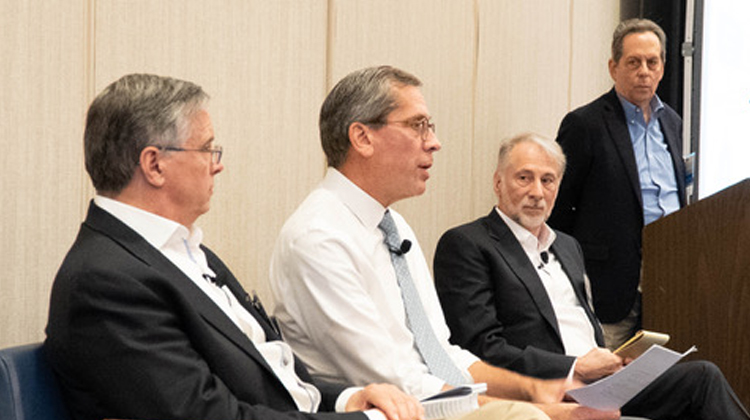The education session on Letters of Credit (LOCs) at the 2023 Legacy Transactions & Networking Forum hosted by AIRROC was literally “ripped from the headlines” by covering the widely reported allegations of fraud arising from the Vesttoo bankruptcy and the attention it has drawn to the use of LOCs. Jonathan Bank, Counsel, Norton Rose Fulbright, chaired the panel of experienced professionals who discussed recent developments of the elaborate fraud and shared their view on the ramifications and fallout to Vesttoo. The panel was comprised of Keith Kaplan, Chief Liquidation Officer for Bedivere and R&Q Re, Hugo Kostelni, Managing Director, Global Risk Solutions, Guy Carpenter & Co. and Robert Romano, Partner, Norton Rose Fulbright. A video replay of this presentation is available On Demand to members on AIRROC’s video library platform.
Robert Romano kicked off the presentation with an overview on the role and necessity of LOCs in reinsurance transactions. LOC’s are a long established vehicle for guaranteeing payment and securing reinsurance obligations.
Keith Kaplan provided the background and explained the business model of the Israeli insurtech company. Essentially, Vesttoo’s thesis was to create a platform to transfer reinsurance risks to the capital markets utilizing data driven risk modeling and analytics. Using a segregated cell facility in Bermuda, Vesttoo offered collateralized reinsurance transactions to the capital markets. To connect to the capital markets, Vesttoo would create an equity security for the segregated cell to transform the reinsurance risk to an investible security. Vesttoo would then created limited partnerships with outside investors that would purchase the equity security. As part of the transaction, the cell needed to post collateral which was typically done via LOCs. The reinsurance contracts themselves were standard quota share, excess of loss or aggregate stop loss contracts.
The scandal emerged when one of the companies involved in a Vesttoo facilitated transaction went to draw down on an LOC and the bank had no record. Following intense public scrutiny after this incident Vesttoo conducted a full-ranging internal investigation and subsequently filed for bankruptcy. Recent reporting and filings in the Chapter 11 proceeding contend that senior management of Vesttoo were involved in an elaborate fraud in which they allegedly forged LOCs totaling around $4 billion. Further investigation is taking place to determine whether any bank employees were also involved in the fraud.
The key question is how was this possible in the first place, given all of the necessary checks and balances in standard risk management of monitoring collateral. Hugo Kostelni explained that the conspiracy was so intricate that Vesttoo was able to evade the audit checks and balances. By all accounts, counterparties followed normal audit procedures of obtaining written confirmation but Vesttoo was able to circumvent those procedures. In order to protect the scheme, Vesttoo senior management allegedly went so far as to create a wholly fictitious person they held out as a bank employee and used this non-existent person to “sign” fraudulent documents. They set up a phony telephone number for this non-existent person, similar to the bank’s phone numbering system, and pretended to be a representative of bank in order to thwart efforts of external parties to verify the existence of certain LOCs. While the dust is still settling, what is becoming clear is that the LOCs that were the foundation of Vesttoo’s business were largely illusory.
The panel was of the view that this was not a systemic problem that will require major wholesale changes in LOC collateralization verification but rather an isolated incident. Tighter risk management procedures may be adopted but risk can only be minimized not reduced to zero; especially where those seeking ways to get around and elude those measures are perpetrating fraud.
The point was made that although the $4 billion scope of the fraud is headline grabbing, this number does not reflect the actual loss or ramifications to the reinsurance market. One must bear in mind that this is collateral that is supporting transactions. The industry responded by replacing the fraudulent LOCs. Obviously there are costs of seeking the replacement capacity that may not be recovered, but this amount will be far, far less than $4 billion.
